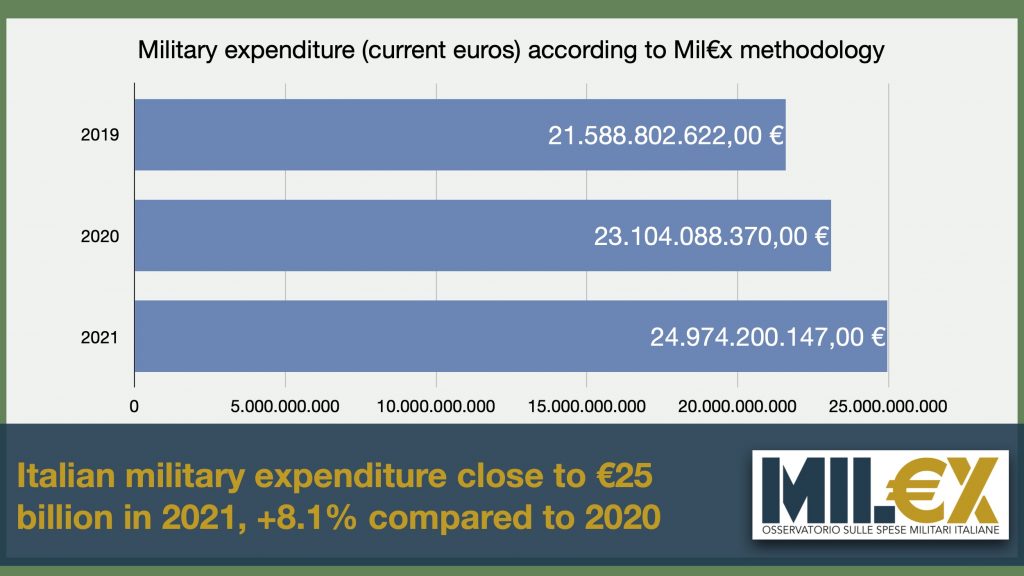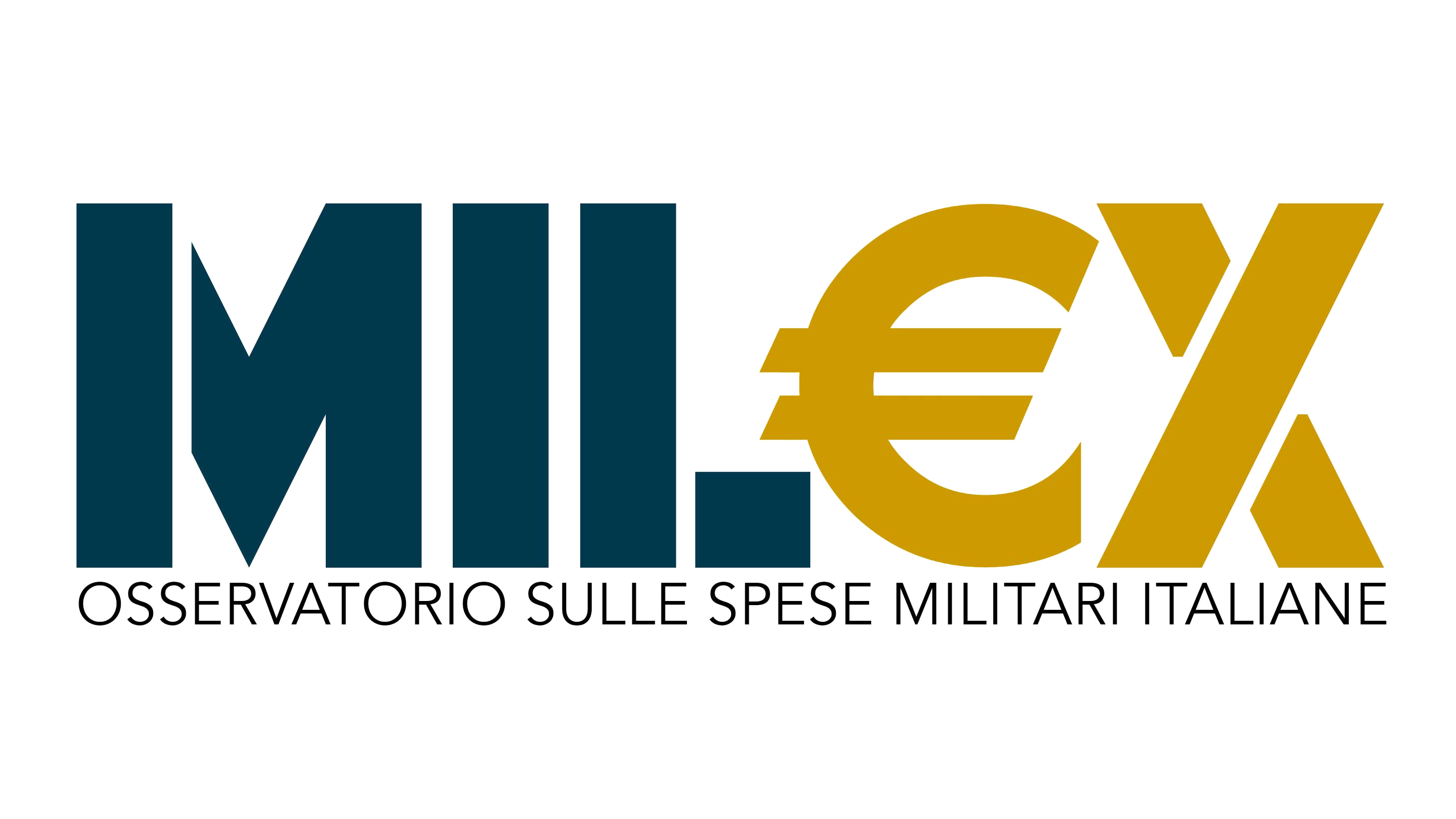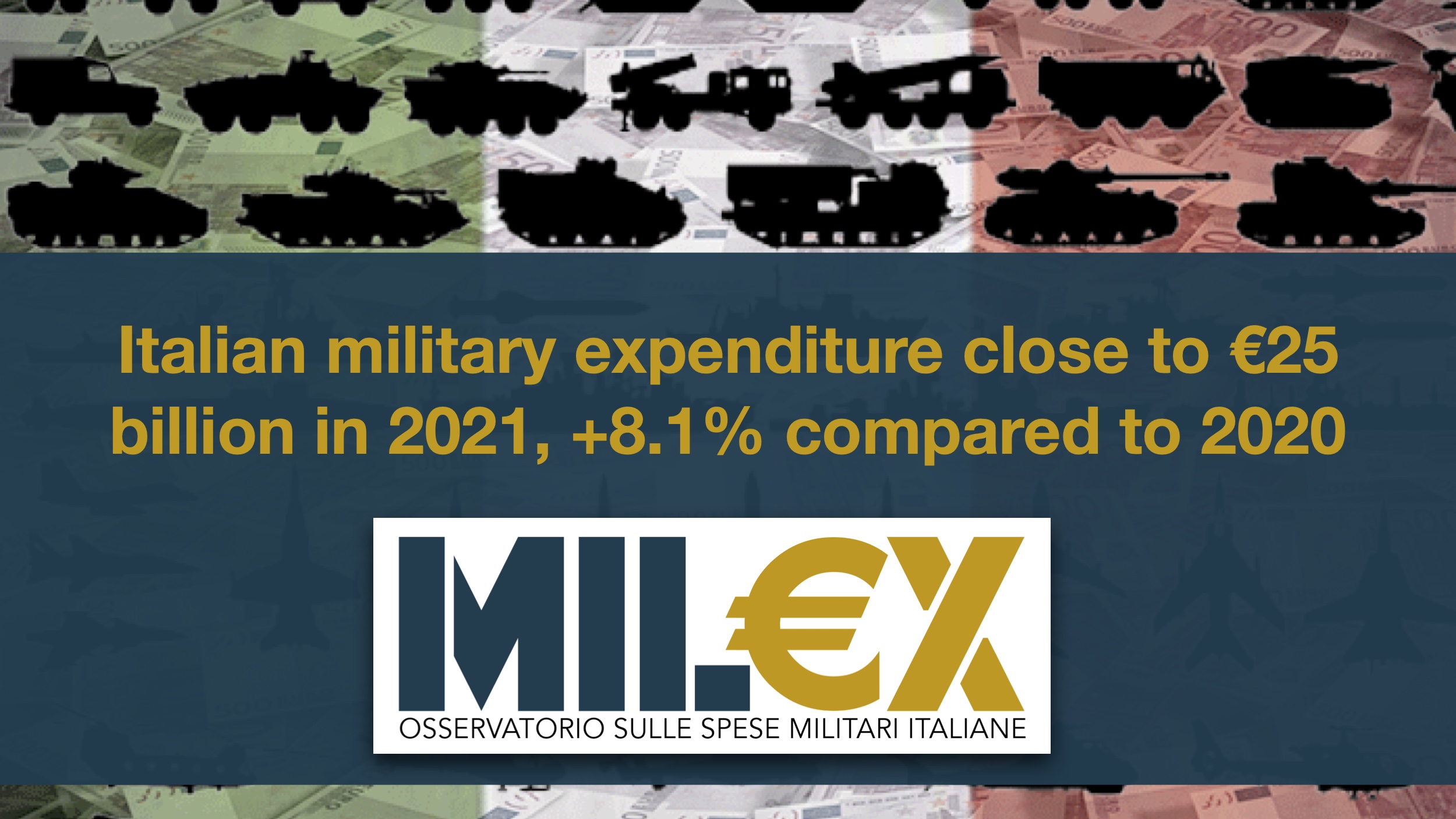Italian military spending will amount to just under 25 billion euros in 2021, according to estimates released by the Mil€x Observatory. These estimates were made according to the new methodology developed by the Observatory and derived from the final data from the financial forecasts of the ministries involved, which shows an annual growth of over 8%.
The figure will be further detailed and defined in the coming weeks when the new Mil€x 2021 Yearbook is published, which will include further data from official documents that are currently not yet available (in particular the Defence Multi-year Planning Document DPP and the breakdown of costs for military missions abroad).
“With regard to the data that we are releasing today, it must be stressed that it is not possible to make an immediate comparison with the previous Mil€x estimates – underlines Francesco Vignarca, founder of the Observatory – as the new methodology radically changes the consideration of some items. We have, however, opreated recounts for the last three years, so as to outline the trends, in decisive growth, decided with the last three Budget Laws“.
In particular, the overall total changes significantly with the new assessment of costs for the Carabinieri: historically, Mil€x – based on official Defence indications – included in military spending half of the budget assigned to them, while now a (much smaller) share is extrapolated from the specific indications that the DPP issues on the purely military use of the Carabinieri in international missions.
The total for 2021 thus estimated is therefore 24.97 billion Euros, largely coming from the Ministry of Defence budget dedicated to military use. To this budget – which for this specific share comes close to €18 billion, an increase of €1.5 billion compared to 2020 – must be added the funds of the Ministry for Economic Development earmarked for the acquisition of weapons systems, the sum of the Military Missions Fund allocated to the MEF extrapolated on the basis of previous years, and the costs of military pensions paid by INPS (extrapolated from DPP data). Finally, the direct contribution to the NATO budget is also added, although it is not entirely clear from which ministries’ funds it is taken, which could therefore see a future elimination of this figure if already included in the Ministry of Defence’s budgets.
The Mil€x Observatory has also assessed some elements of indirect military expenditure linked to new military funds in the European Union and to the costs of the presence of US bases on Italian territory. This is an estimate that will have to be analysed and confirmed later, as it derives from old US assessments and documentation, but it is proposed as a general reference element.
The growth in military spending compared to 2020 is significant and amounts to 8.1%, while the increase compared to 2019 is 15.7%. The costs for the acquisition of new weapons systems in particular have caused this increase, especially as the defence quotas provided for in the government’s multiannual investment funds (about 25% of which are earmarked for the military, according to a recent analysis published by our Observatory) begin to be absorbed. For the first time, the overall total allocated by Italy for the purchase of new armaments exceeds 7 billion euros (the figure is just under 7.3 billion).
As already mentioned, a more in-depth treatment of all the items will be made explicit in the Mil€x 2021 Yearbook currently in progress (published after the release of the official documents that are still missing), which will be able to refine the assessments and definitively confirm them, also giving an estimate of the final military expenditure for the years preceding the current one. As regards the breakdown of expenditure by type, it should be noted that (again, limited to the specific military function) the Ministry of Defence spends around €11 billion on personnel, with an operating expenditure of €2.2 billion and investment costs that, for the first time, exceed €4 billion per year.
Assessing the general functional lines, it is also possible to divide the overall military expenditure into personnel costs (45.8%), costs for investments in new armaments (29.2%), costs for the functioning of the Armed Forces (14.5%) and other ancillary costs (10.5%). Compared to the current expenditure of the State, military expenditure is about 4.3% of the total (substantially in line with the recent past).


